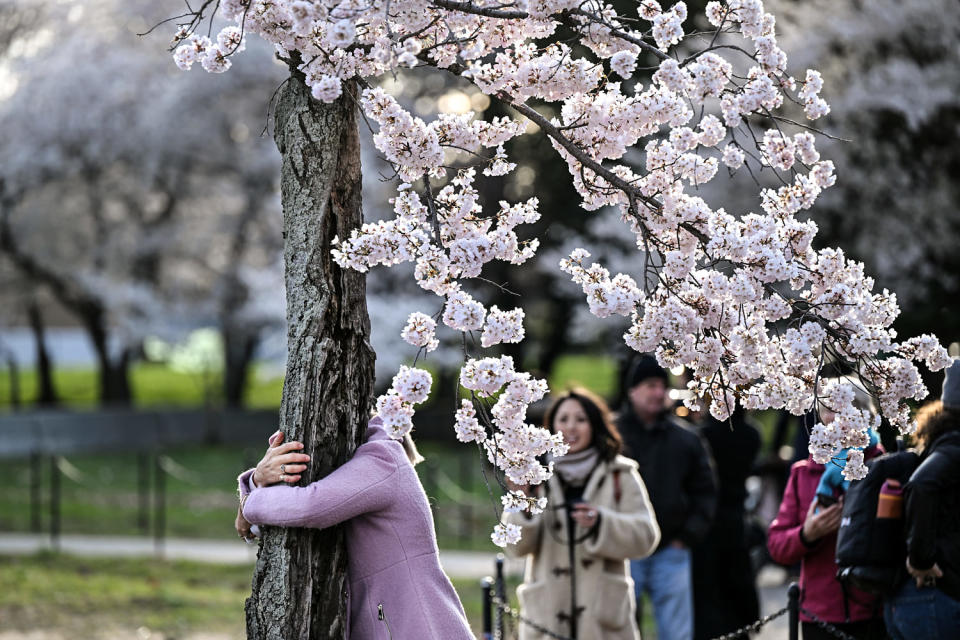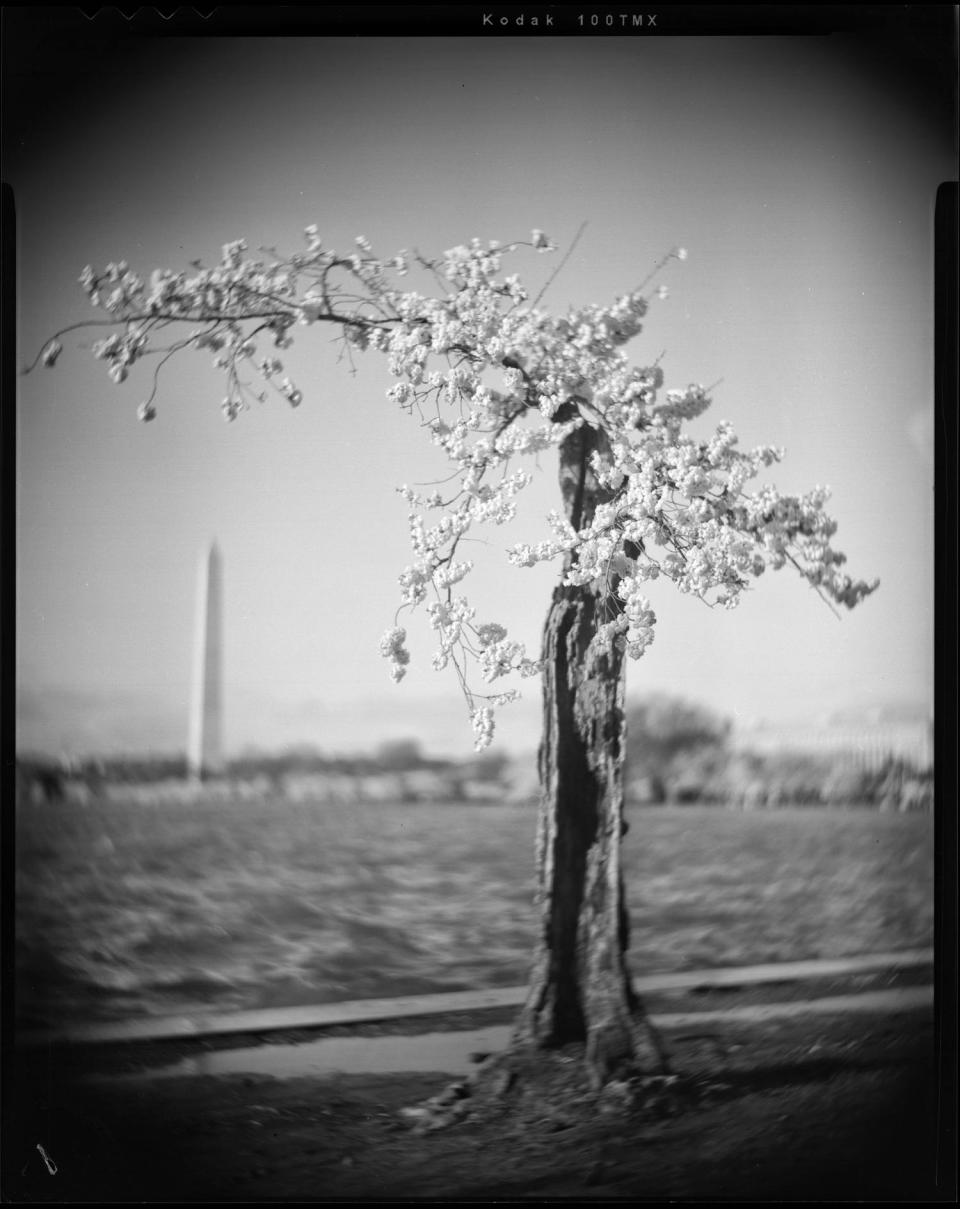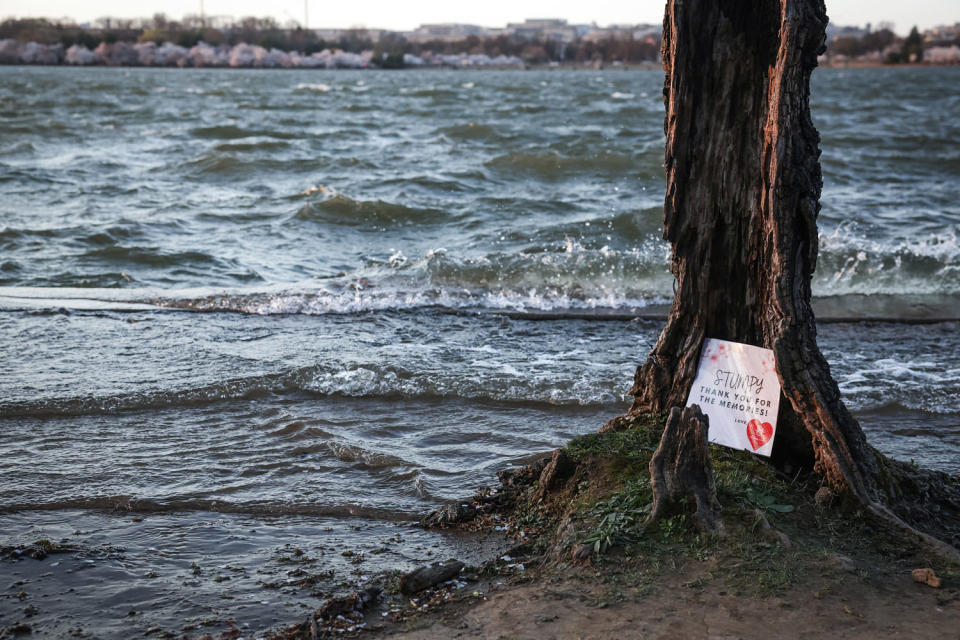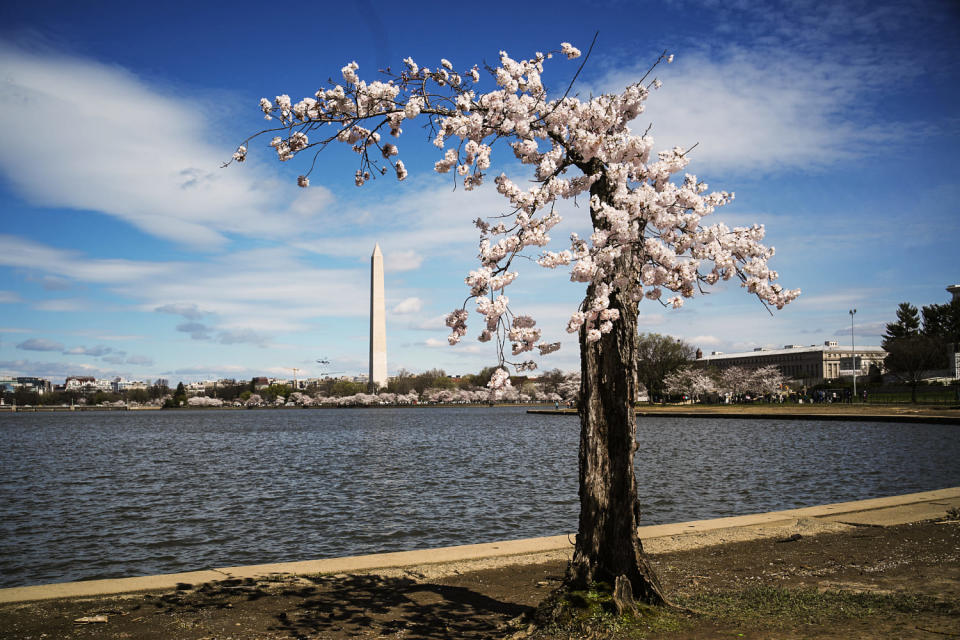'Stumpy,' a beloved Japanese cherry tree, makes its last bloom in Washington
WASHINGTON — Stumpy, a scraggly Japanese cherry blossom tree whose few skinny branches flower every spring to the delight of residents and tourists alike, is on its last legs.
Arborists say Stumpy’s interior trunk is hollow, reason enough to place it among 158 trees scheduled to be cut down in coming months as part of a $113 million sea wall repair project near the National Mall prompted by climate change.
Ultimately, the National Park Service will remove about 300 of 3,700 trees that line the banks of the Tidal Basin reservoir between the Thomas Jefferson and Franklin Delano Roosevelt memorials to shore up sea walls lining the reservoir and the west Potomac River.
Stumpy’s profile rose in 2020 during the pandemic when a Reddit user posted a photo of it, likening its outwardly limp condition to his love life. The tree and the user’s story were circulated online, and Stumpy’s fame skyrocketed.

Much like the spindly Charlie Brown Christmas tree that sparked new life into a listless holiday season, the little tree that could has become a sort of Washington icon as the warmth of spring rekindles its sparse branches and pink flowers emerge.
As word about Stumpy’s fate has gotten out, many fans have made their way to the Tidal Basin to see it one last time.
“In each succeeding year, we have seen more and more people come down asking for Stumpy, lining up to get pictures,” said Mike Litterst, a park service spokesman. “Of course, this year, it’s through the roof.”
Next month, the park service will take clippings from Stumpy and the other cherry trees scheduled for elimination and use them to grow more Stumpies and more of its less famous brethren. Then the dead trees will be turned to mulch that will be spread around those still standing on the National Mall.

“If we wanted to, we could have nothing but Stumpy clones, but we prefer the variety,” Litterst said. “So Stumpy and all the other trees that are coming down will at least, we think, have a beneficial and useful second life.”
Residents and tourists have flocked to the Tidal Basin to see the cherry trees in peak bloom this year, which hit the second-earliest peak bloom date on record on Sunday, and many are there to snap photos and pay tribute to the tree that stands alone, away from the other cherry trees.
“[It’s] dead on the inside and alive on the outside,” tourist Amanda Lawson said with a laugh.
Emily Vickers, a photographer from Atlanta, has visited the Tidal Basin every year for the past decade just to see Stumpy.
“I think with Stumpy, it’s almost like the ugly duckling, but it’s beautiful,” Vickers said. “It’s by itself, and it just stands out. I think when you look at the history of everything, it’s kind of magical, and it’s saddening that it’s going to be taken down.”

Stumpy and the others are poised for a takedown because parts of the sea walls along the west Potomac River and the Tidal Basin, a manmade reservoir near the National Mall, have settled 5 feet since they were built in the late 1800s and the early 1900s, according to the park service. Several factors are contributing to the deterioration, including age, poor drainage and rising sea levels.
Peter Byrne, faculty director of the Georgetown Climate Center in Washington, said some types of trees can fare well in water, but not the Japanese cherry blossom.
“You don’t have plants that are adapted to being in water,” he said. “That’s part of the issue with the cherry blossoms is they’re not at all what you would have next to water. Other kinds of trees will be much happier being next to the water.”
He said that although the sea wall repair will eliminate an organic exchange between the land and water, he understands the reasoning behind the effort.

“A cultural landscape like the Tidal Basin, which is really important to people because of its symbolism and the associations they have with it, is really an exceptional space where doing things like sea walls may make more sense than they would in an ordinary territory that’s threatened by flooding,” Byrne said.
Water from the Potomac River flows over parts of the sea walls twice a day during normal tide conditions, flooding the ground around many of the cherry trees, including Stumpy, and threatening visitors’ safety, Litterst said.
He said Stumpy’s condition is a direct result of climate change: “At this point, it’s almost literally nothing more than bark and a few branches on top.”
This article was originally published on NBCNews.com
